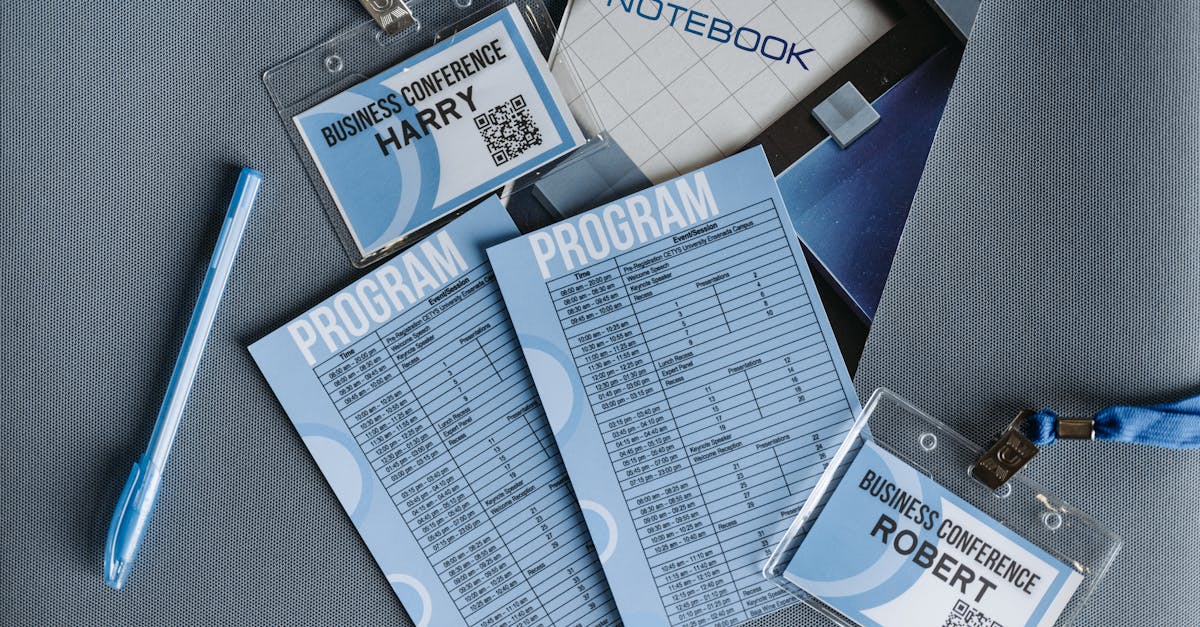
Introduction
New hires shouldn’t drown in paperwork or wait weeks for access — yet too many teams still stitch together ad‑hoc checklists, manual handoffs, and out‑of‑date forms, which slows time‑to‑productivity and creates compliance risk. Role‑based onboarding templates, paired with document automation and conditional workflows, turn static documents into actionable, department‑specific playbooks that assign owners, trigger IT provisioning, and enforce security sign‑offs — so new employees start contributing faster and audits become predictable. This approach directly addresses common pain points around time, tasks, and training in HR onboarding.
In this article: you’ll see how to map tasks by role and department; standardize template sets (job descriptions, role agreements, 30/60/90 plans, checklists); build branching workflows for managers, IT, and compliance; measure role‑specific KPIs; package starter sets for common functions; and establish governance and localization — plus a quick no‑code playbook to launch a library in days.
Designing role‑based onboarding: mapping tasks, training and compliance by department
Map tasks by role and department. Start with a matrix that lists role responsibilities across HR onboarding, IT setup, manager check‑ins, and compliance tasks. This gives you a clear view of handoffs and dependencies in the new hire onboarding process.
How to map
- Column 1: Role (job title, level)
- Column 2: Day 0–30 tasks (new hire onboarding essentials)
- Column 3: Training modules and owners (employee orientation programs, new employee training)
- Column 4: Compliance items and due dates (I‑9, policy acknowledgements)
Assign owners and SLAs. Make each task actionable by naming a responsible person (manager, HR, IT, security) and a due date. That creates accountability and feeds into your hr onboarding checklist and hr onboarding process automation.
Use role level granularity. Junior, mid, and senior roles often need different ramps. Map training hours, mentorship touchpoints, and expected competency milestones for each level to reduce ambiguity in time‑to‑productivity.
Template types to standardize by role: job descriptions, role agreements, training plans, checklists
Standardize templates to scale onboarding. Create a set of core templates for every role: job description, role agreement (or offer addendum), a 30/60/90 training plan, and a role‑specific checklist. Standard templates simplify manager execution and improve consistency across the onboarding process.
Core templates to include
- Job description: Responsibilities, KPIs, competencies.
- Role agreement / role-specific employment terms: Expectations, probation period, and review cadence. Use legal-ready forms like an employment agreement template to stay compliant (example: https://formtify.app/set/employment-agreement—california-law-dbljb).
- Training plan: Module list, learning objectives, owners, and timelines (use for new employee training).
- Onboarding checklist: Day 0, week 1, month 1 items for manager, HR, and IT to complete.
Versioned checklist examples. Maintain a master hr onboarding checklist and role variants (engineering, sales, support). Link each template to a performance checkpoint such as a performance appraisal template for end of probation review: https://formtify.app/set/performance-appraisal-letter-6xd8y.
Conditional workflows and branching templates for managers, IT, security and compliance owners
Design rules, not just documents. Conditional workflows let you show or hide tasks based on role, location, or hire type (full‑time vs contractor). This avoids overloading managers with irrelevant steps and reduces manual coordination work.
Common branches
- Manager branch: Goal setting, 1:1 schedule, role‑specific resources.
- IT branch: Hardware request, app access, VPN and SSO provisioning.
- Security & compliance branch: Training assignments, background checks, data access approvals.
- Location/contractor branch: Local tax forms, workspace setup, contractor agreements.
Use onboarding automation tools. Modern onboarding software supports conditional logic and branching templates so each stakeholder gets only relevant tasks. That reduces errors and increases completion rates for the hr onboarding process.
Best practice: Build approvals into branches (e.g., security owner signs off before access is granted) to enforce compliance without slowing the experience.
Measuring success: onboarding KPIs by role (time‑to‑productivity, completion rates, compliance pass rates)
Define role‑specific KPIs. Time‑to‑productivity, onboarding task completion rate, engagement with training modules, and compliance pass rates are core metrics. Tailor targets by role — a support rep may hit productivity earlier than a senior engineer.
Key metrics and how to measure
- Time‑to‑productivity: Days until the employee completes key deliverables or reaches baseline KPI. Use objective milestones defined in the training plan.
- Completion rate: Percentage of onboarding checklist items completed on time by role and owner.
- Compliance pass rate: Percent of hires who complete mandatory compliance tasks and pass assessments within required windows.
- Engagement and training completion: Module completion, quiz scores, and manager ratings during 30/60/90 reviews.
Use these KPIs to guide retention strategies for new hires. Low engagement or long time‑to‑productivity are leading indicators of churn. Track trends by role and adjust training, mentorship, or workload accordingly.
Sample role‑based template sets and package recommendations for HR teams
Package templates by role family. Offer prebuilt sets so HR can spin up onboarding quickly. Below are starter packages aimed at common functions.
Recommended packages
- Engineering starter pack: Job description, 30/60/90 technical ramp, access checklist (repos, CI/CD, cloud), mentor pairing form.
- Sales starter pack: Territory playbook, product training modules, CRM access checklist, quota ramp plan.
- Customer support pack: Escalation flow, knowledge base access, call scripts, shadowing schedule.
- Manager leader pack: Role agreement with leadership expectations, onboarding checklist for direct reports, first‑90‑day coaching plan.
- Remote worker pack: Home office checklist, time zone communication guidelines, security requirements.
How to choose a package. Match the package to the role family and then add role‑specific items. Use hr onboarding software or a template library to combine items into a single onboarding set and automate delivery. Consider pairing the set with a probation performance review template like the example performance appraisal link above.
Governance: version control, localization and role‑based access to onboarding templates
Control your source of truth. Governance ensures everyone uses the latest hr onboarding template. Use version control, a clear naming convention, and change logs so HR, legal, and compliance can approve updates before they go live.
Key governance controls
- Versioning: Tag templates with semantic versions and maintain a changelog for audits.
- Approval workflows: Require sign‑offs for legal, security, and local HR before publishing.
- Role‑based access: Limit editing rights to template owners and grant read/use permissions to managers and admins.
- Localization: Create locale variants for labor law, tax forms, and translated content.
Audit and compliance. Maintain an immutable audit trail of who used which template for each hire to support compliance reviews and reduce risk during HR audits.
Quick start: build a role‑based onboarding library with no‑code automation
Launch a minimal viable library in days. Pick three priority roles, assemble their templates (job description, training plan, checklist), and automate delivery using no‑code onboarding automation tools or onboarding software.
Step‑by‑step quick start
- Identify 3 priority roles and gather existing materials.
- Create standardized templates (use hr onboarding template and hr onboarding checklist patterns).
- Define conditional branches for manager, IT, and security tasks.
- Automate the workflow with no‑code builders so tasks trigger emails, ticket creation, and reminders.
- Run a pilot with 2–3 hires, measure onboarding metrics and iterate.
Tip: Use an existing set of legally reviewed role agreements and performance templates to speed launch (examples: https://formtify.app/set/employment-agreement—california-law-dbljb and https://formtify.app/set/performance-appraisal-letter-6xd8y).
Next steps: Expand the library role by role, add localization, and enforce governance to keep the system reliable as you scale.
Summary
Role‑based onboarding templates turn scattered checklists and manual handoffs into repeatable, auditable playbooks that speed HR onboarding and reduce compliance risk. Mapping tasks by role, standardizing template sets, and building conditional workflows ensures each stakeholder — HR, managers, IT, and legal — gets the right tasks at the right time. Document automation reduces administrative overhead, enforces versioned governance, and makes audits predictable so HR and legal teams can focus on strategic outcomes. Ready to deploy a library in days? Explore prebuilt templates and no‑code automation at https://formtify.app.
FAQs
What is HR onboarding?
HR onboarding is the structured process that brings new hires up to speed with their role, the team, and company policies. It includes paperwork, training modules, introductions, and milestone check‑ins to align expectations and enable early productivity.
How long should onboarding last?
Onboarding length varies by role and complexity: many organizations use a 30/60/90‑day framework for initial ramping, while more technical or senior roles may require six months or longer. Treat onboarding as a phased program with clear milestones rather than a single-day event.
What should be included in an onboarding checklist?
An effective checklist covers Day 0 essentials (forms, IT access), week‑one orientation tasks, role‑specific training modules, compliance acknowledgements, and manager check‑ins tied to 30/60/90 goals. Assign owners and SLAs for each item so nothing falls through the cracks.
What is the difference between onboarding and orientation?
Orientation is typically a short, introductory event that covers company basics and immediate logistics. Onboarding is the longer, role‑specific process of integrating an employee through training, performance milestones, and ongoing support.
How do you measure onboarding success?
Measure onboarding with role‑specific KPIs like time‑to‑productivity, completion rates for onboarding tasks, compliance pass rates, and engagement with training modules. Use these metrics to identify friction points, improve training, and reduce early turnover.





